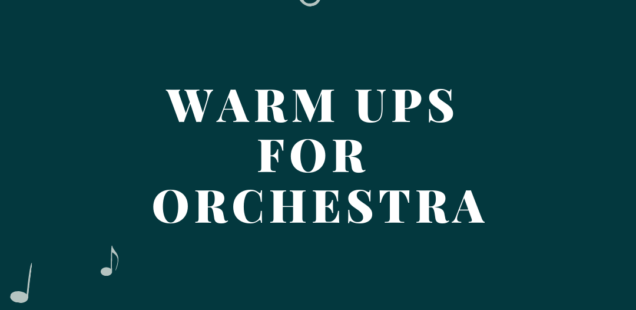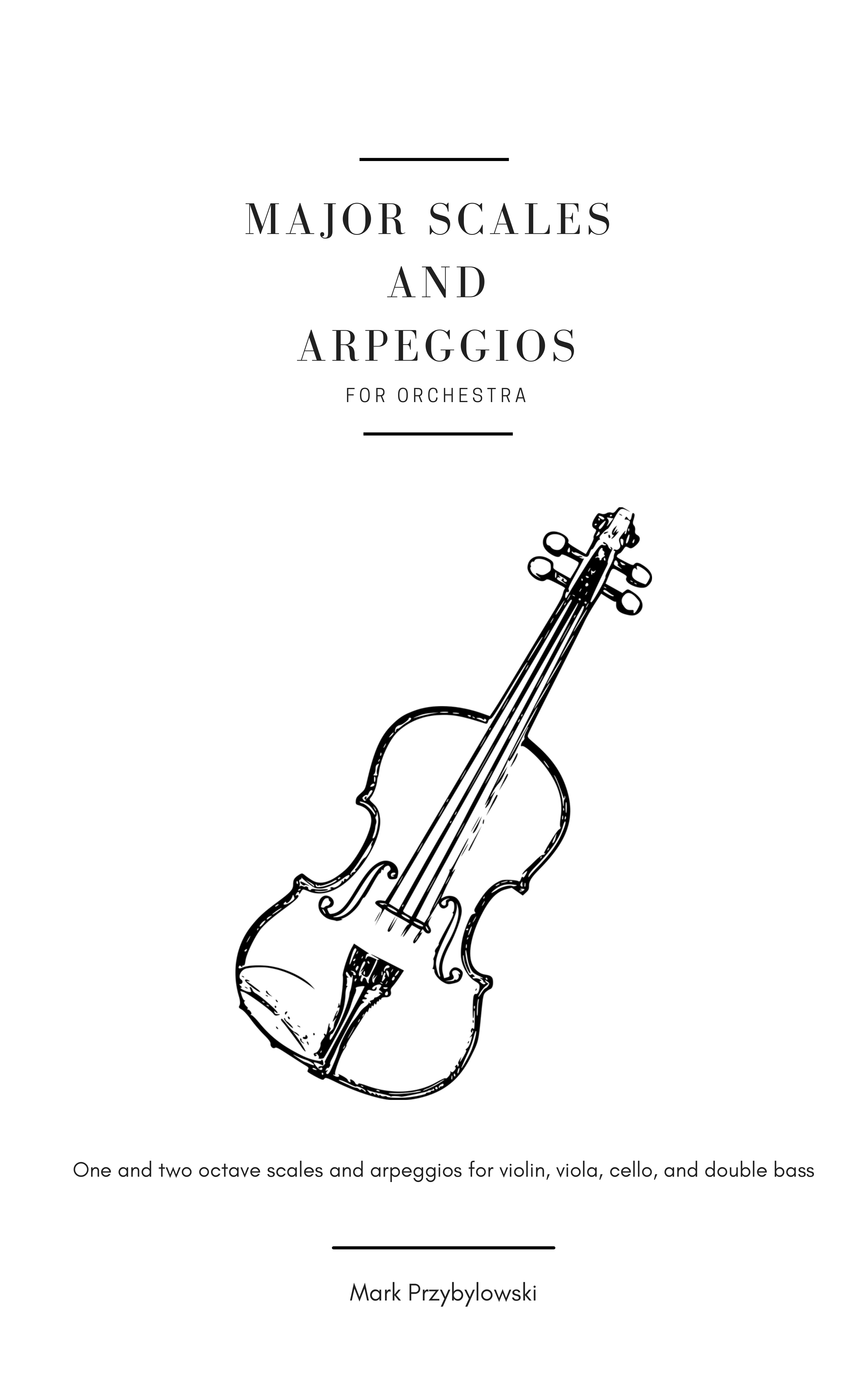
Warm Ups for String Orchestra
Musicians know the value of a warm up routine. I will admit, my students often just want to skip the warm ups and go straight to the music. I can’t blame them! However, I try to help them see the value of warming up and taking things slow.
Why warm up? They might say. Can we just play our music? Have you ever heard this before? Warm ups engage our muscles, get our minds focused on music, and our ears listening and tuned to our instrument and fellow musicians. Additionally, they help our students transition from the previous class into a mindset of making music.
How long you warm up depends on the amount of time you have to work with your students and the goals for that day. On average, I spend between 10 to 20 minutes on a warm up routine of some kind.
What Should Be In A Warm Up?
Warm up time can touch on a lot of different concepts and can be flexible depending on what you are teaching. For example, your warm up can include aspects of what you are going to work on for that day. This makes it so that the learning goals flow throughout the lesson. For example, if you are working on a song in G major, it makes sense to warm up by playing the G major scale, arpeggio, or some kind of study in that key. Additionally, the warm up time should be more than just loosening up muscles. You can teach hard technical skills during warm ups also. Use it as a time to address posture, playing position, and any technical aspects of playing.
Additionally, warm ups should engage the ears. Doing echo activities and call and responses by ear are an awesome way to get students listening and immediately engaged.
In general, my warm up routine incorporates tuning, bow exercises, scales, arpeggios, finger patterns, method book songs, rhythms, and chorales.
Bow Exercises
I love doing bow exercises with my students (especially the younger ones). Not only do they get students playing muscles engaged and stretched - they are fun! There are many different bow exercises you can incorporate into your classroom. Here are some of my favorites:
- Spider Crawl: Students climb up and down the stick of the bow.
- Windshield Wipers: Rotate wrist with the horse hair parallel to the floor. Maintain a solid bow hold throughout.
- Bow Lifts: Horse hair parallel with the floor. Students keep a solid bow hold and lift their arms up and down.
- Pinkie Taps: Violinists and violists tap their pinkie on the stick of the bow (near the frog).
- Bumpy Thumb Push Ups: Students flex their thumb in and out.
Dr. Charles Laux has some awesome videos on You Tube demonstrating his bow exercise routine. It is awesome! Check it out below.
Long Tones
Long tones are the first thing I do after tuning when I practice. Long tones help to capture your sound for the day, analyze the mechanics of creating a beautiful sound, and simply get us in tune with our instruments. I've done long tones with my students on the open strings and they really help to address all aspects of tone production.
Scales, Arpeggios, and Rhythms
Scales and arpeggios help students build solid intonation and accurate finger placement. I also love applying articulations and different rhythms to the study of scales..
I created a scale and arpeggio page with 9 of the essential scales I like to cover with my students before they graduate middle school. I also made a resource of 27 different rhythms and bowings that can be applied to any scale. These resources have been incredibly helpful to me in my teaching and I use them year to year. You can check out those two resources below:
Finger Patterns
Finger patterns really help to reinforce pitch and fingerings. They work common patterns that students will encounter in music. They also hyper focus on a specific set of notes in a way that the scale doesn’t.
Looking for resources for finger patterns?
I developed a finger pattern resource called Essential Finger Patterns for Orchestra that addresses the lydian, major, minor, and phyrgian patterns in first position and on every string! Check it out here:
Additionally, Essential Elements Book 2 has a great finger pattern resource in the back of the book. While I have never used Dr. Bornoff’s resources, I’ve always found them interesting.
Conclusion
There are many other great resources for developing a warm up routine - too many to truly list. However, I will share a few here that I've used in my classroom.
- David Allen’s Daily Warm Ups for Strings has always been an awesome resource. Rhythms, finger patterns, scales, articulations, shifting, and more are included. It's easy to pick and choose which exercises you want to do with your students as well.
- Christopher Selby’s method book, Habits Of A Successful String Musician is another great resource. The text includes scales, rhythms, finger patterns, slurs, chorales, and so much more.
- Fine Tuning for Strings by Frank Spinosa and Harold W. Rusch. These are a collection of 50 short chorales. They are a great way to work on intonation, harmony, and ensemble playing at the start of class.
- Uni Tunes has some simple and pleasing melodies set in the keys of C, G, and D. I've used this resource by having students play a few measures a day. They work as an awesome sight reading activity as well as reinforcing intonation in familiar key centers.
Ultimately, find what works best for you and your students. Perhaps it’s materials you make on your own or a specific method book. Find what engages your students and meets your learning goals. Allow your students to lead the warm up by conducting or counting off. It can be a time they look forward to each rehearsal.


